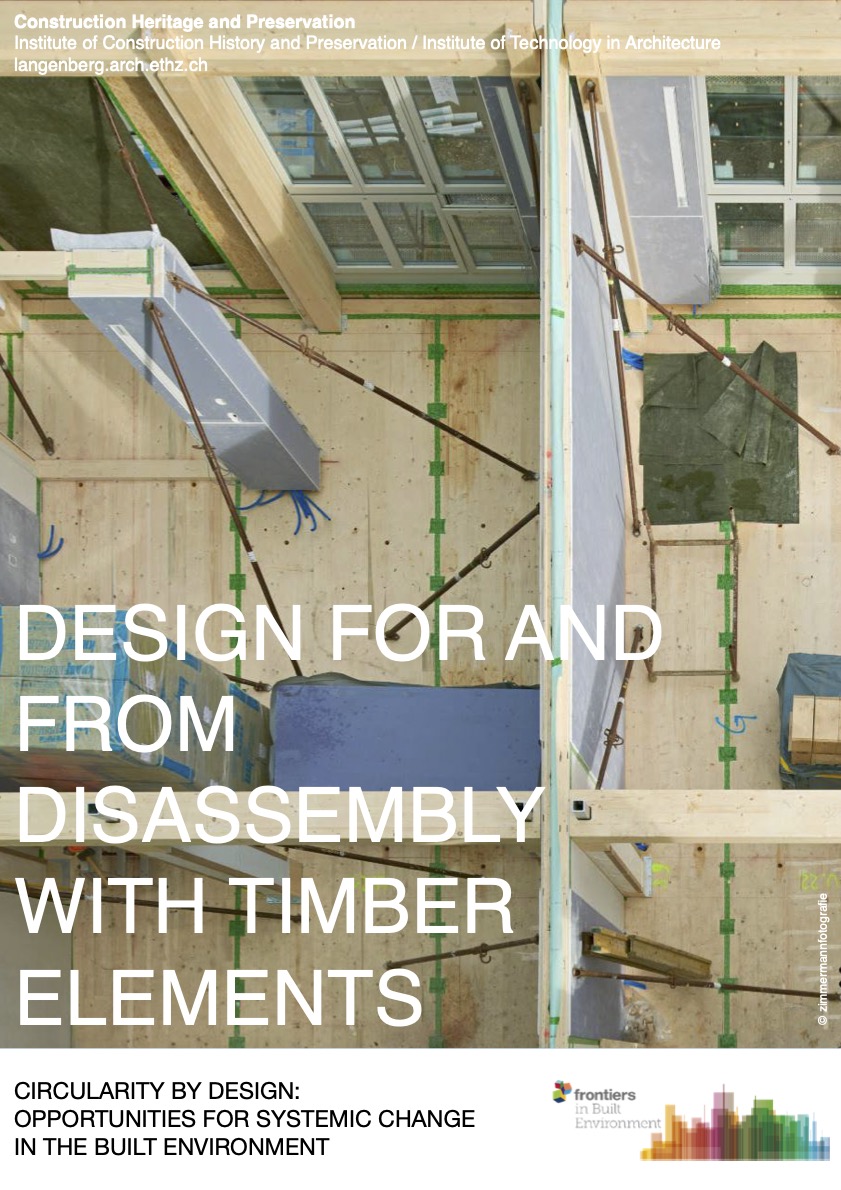
Grüter, Cäsar, Matthew Gordon, Marcel Muster, Fabian Kastner, Philippe Grönquist, Andrea Frangi, Silke Langenberg, und Catherine De Wolf. 2023. «Design for and from disassembly with timber elements: strategies based on two case studies from Switzerland». Frontiers in Built Environment 9 (November): 1307632. https://doi.org/10.3389/fbuil.2023.1307632.
When a timber building gets disassembled and its elements either are burned or biodegrade, the carbon stored in the timber structure gets released to the atmosphere as CO2. Reusing timber elements prevents this process from happening and thus delays the global warming caused by greenhouse gas emissions. Even if there is a long historic tradition of timber reuse in Switzerland, currently a low fraction of a timber building’s elements is being reused after its disassembly. In this study, strategies that could facilitate circular use of timber elements are analyzed. The focus lies on the design process, which is investigated from two perspectives: strategies at the start-of-life of buildings to enable new timber element cycles to emerge (design for disassembly, or DforD), and strategies at the end-of-life of buildings to keep existing timber elements cycles closed (design from disassembly, or DfromD). Two case studies of recently completed multi-story timber-hybrid buildings in Switzerland were analyzed from both perspectives. Regarding DforD, a scoring system was developed that assesses single elements according to their disassembly and reuse potential. Regarding DfromD, a building design optimization tool was created that takes dimensional design tolerances of a building as an input and proposes a procurement-optimized and structurally safe arrangement of reused elements, which are taken from an inventory that is based on the two case studies. It was found that connections between reinforced concrete and timber parts play a crucial role in terms of DforD and that building layouts with DfromD elements may vary widely according to the chosen optimization variable. In conclusion, both applications have the potential to scale up the competitiveness of reused elements.